Simgot EA1000 - Beyond
Let’s cut to the chase. Simgot’s sub-flagship IEM, the EA1000, codename “Fermat”, is a huge surprise for me and has quickly become one of my favorite single dynamic driver (DD) IEMs. How come? Let’s talk about it.
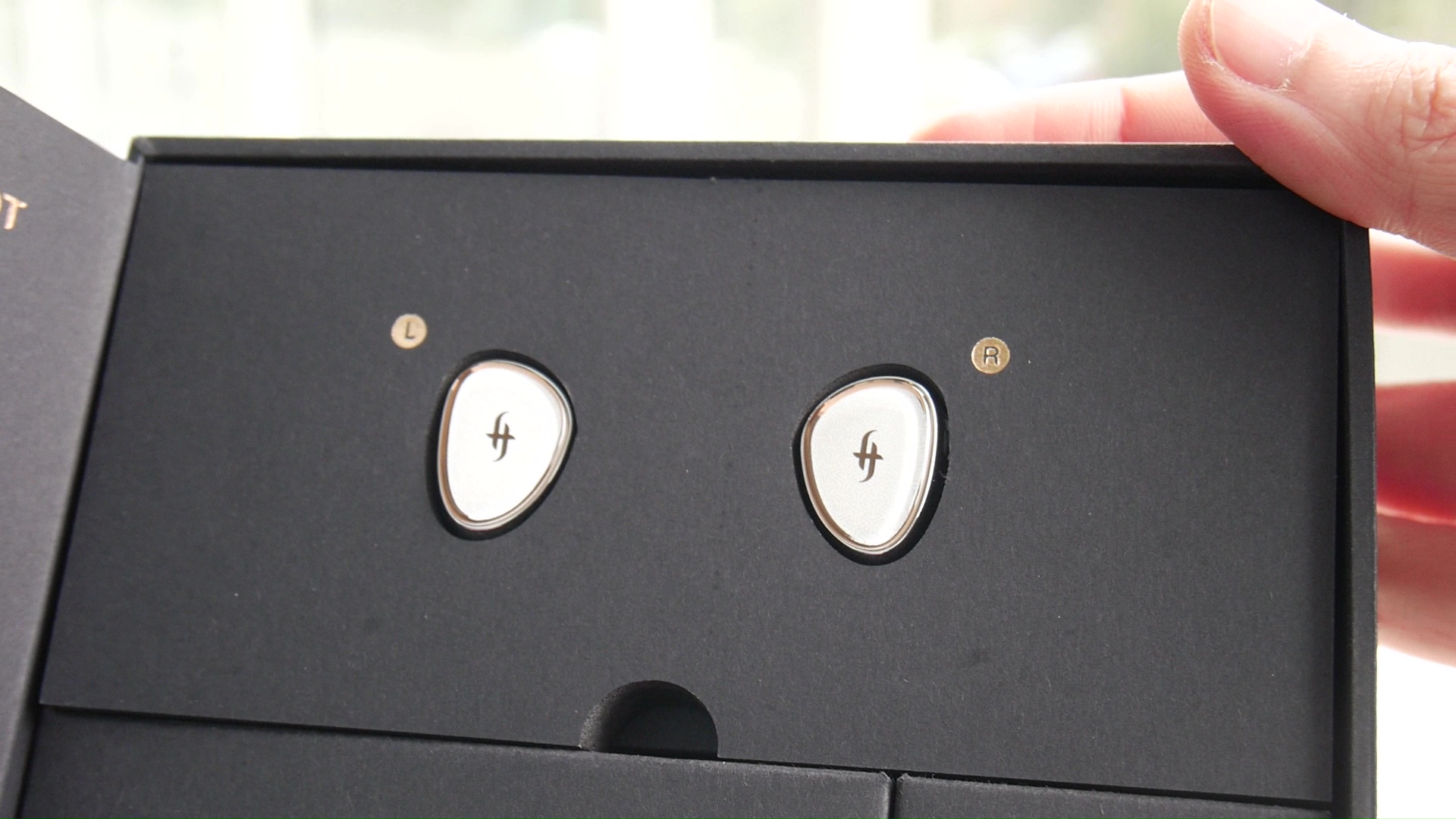
(Yes, the IEM is surprised too)
Forewords
- What I look for in an IEM is immersion. I want to feel the orchestra around my head, track individual instruments, and hear all of their textures and details. I’m not picky about tonality, as long as it is not make the orchestra, violin, cellos, and pianos sound wrong.
- I rate IEMs within with a consistent scale from 1 (Poor) to 3 (Good) to 5 (Outstanding). An overall ranking of 3/5 or above is considered positive.
- Ranking list and measurement database are on my IEM review blog.
- Terms used in my reviews are consistent with the glossary by Headphonesty
- This review is based on a review sample from Simgot (Thank you Betty @ Simgot for sending the IEM!). I have no affiliation with or financial interest in Simgot.
- The unit retails for $220 at the time this review was published. Unaffiliated link: Linsoul
General Information
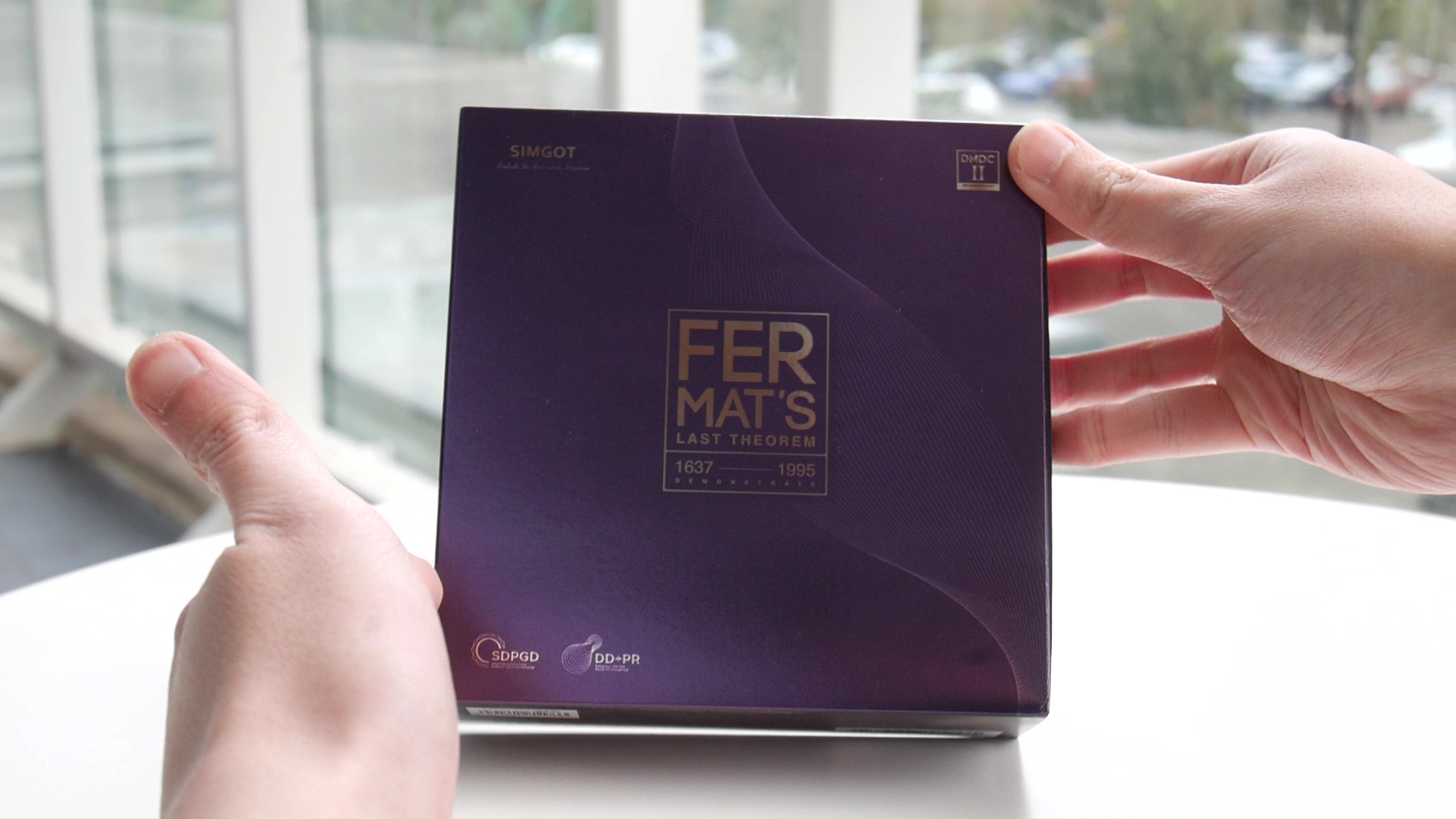
At the time of writing, the EA1000, codename “Fermat”, is the second highest IEM in the entire product line of Simgot. It shares quite a few technologies with the flagship EA2000 (“Boson”), namely the “DMDC” dual magnet dual-cavity dynamic driver design and the 1DD+1PR driver topology. EA1000 also features a brand new “Purple-Gold” diaphragm that aims to simultaneously achieve high rigidity, lightweight, and elasticity, the desirable characteristics of a diaphragm in DD.

First, let’s talk about the DD. As you know, DD makes sound by moving a diaphragm back and forth according to incoming electrical signal, translating it into soundwaves. This movement is possible thanks to a coil of conducting wires (“voice coil”) glued to the diaphragm and wrapping around a permanent magnet. When the electrical current flows through the coil, the coil acts like a magnet and moves backward or forward depending on the direction of the current, bringing the diaphragm along with it. Ideally, we want to the diaphragm to move back and forth quickly (to produce high frequencies) over a long distance, return to the middle position immediately when the signal stops, and do not lose shape (distort) when doing these acrobatics. In order to achieve these requirements, manufacturers need to simultaneously reduce the weight and increase the hardness of the diaphragm, reducing the weight of the voice coil, and increasing the strength of the magnet. The DMDC driver design of Simgot handles the the magnet strength. The “purple-gold” coating developed by Simgot provides the lightness and strength to the diaphragm. Taken together, we have a nice DD sitting at the heart of EA1000, powering the listening experience.
However, the resulting sound quality of a DD-based IEM relies on more than just the driver. It is these factors, that make the EA1000 shine, in my opinion.

To me, the star of EA1000’s technology is the 1DD+1PR driver topology inherited from the Boson. PR here means “Passive Radiator,” a 6mm diaphragm that vibrates thanks to the air pressure from the main 10mm DD rather an electrical voice coil.
How does that work? If you look at a DD, you would likely find two openings, one at the front of the diaphragm for the sound to escape and one at the back of the diaphragm to balance or release the pressure. When you glue the DD into an IEM shell, the back opening of the DD would connect to a “cavity” or a “chamber” that are usually built into the shell. When the diaphragm vibrates, it would compress and release the air volume in the chamber. Usually, we would poke a hole in the chamber (a.k.a., “back vent”) to release the pressure deliberately to control the behaviour of the DD.
Now, imagine we attach a diaphragm on the vent instead. Ideally, the passive diaphragm would move in unison (but in an opposite direction) to the diaphragm of the main DD. All that remains is designing the chamber carefully to control its resonance, thus changing the frequency response of the passive diaphragm. In other words, it would make the same sound as the main DD but its sound would come from outside the ear canal, leading to some interesting sonic experiences.
Non-sound Aspects


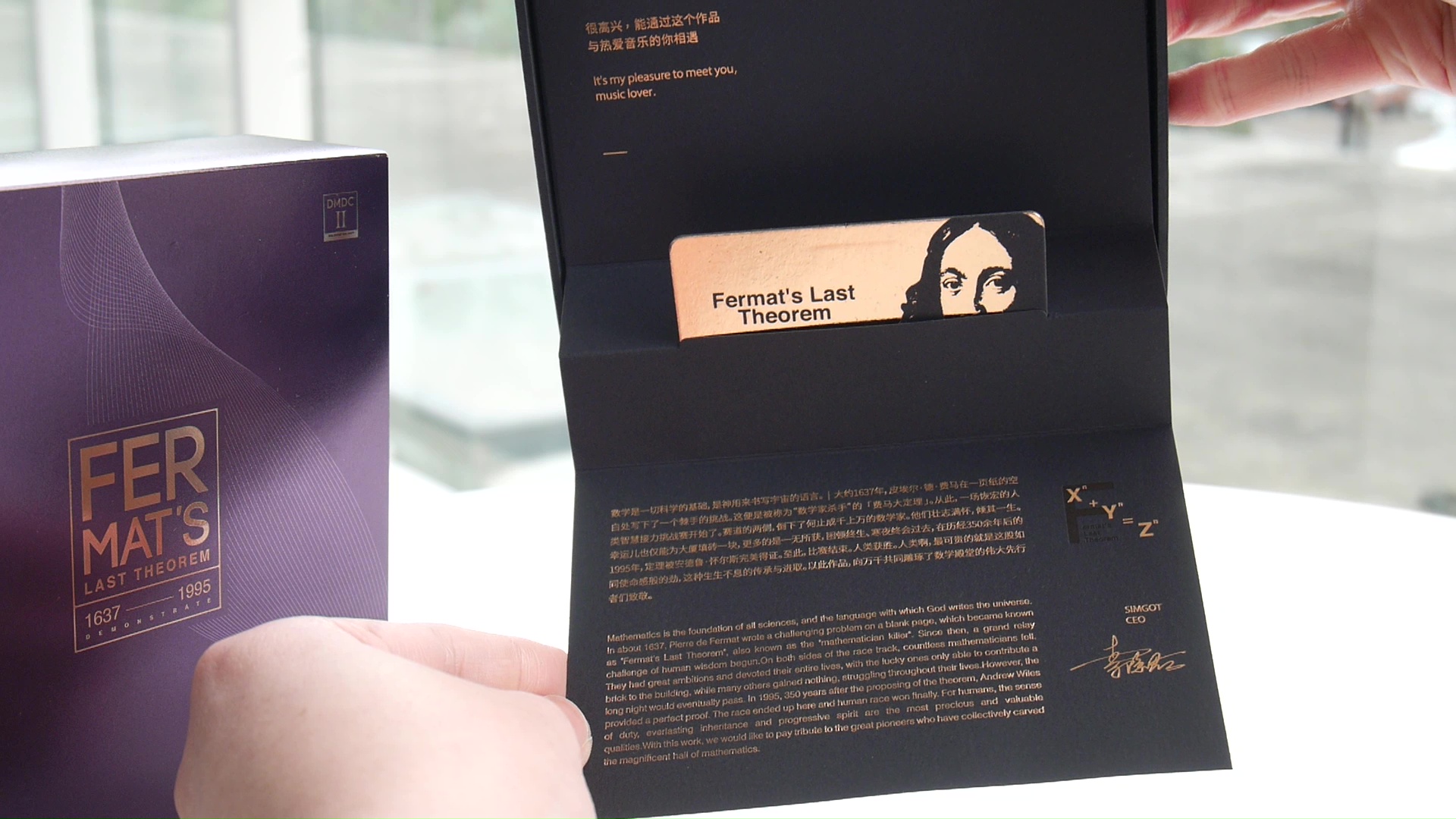
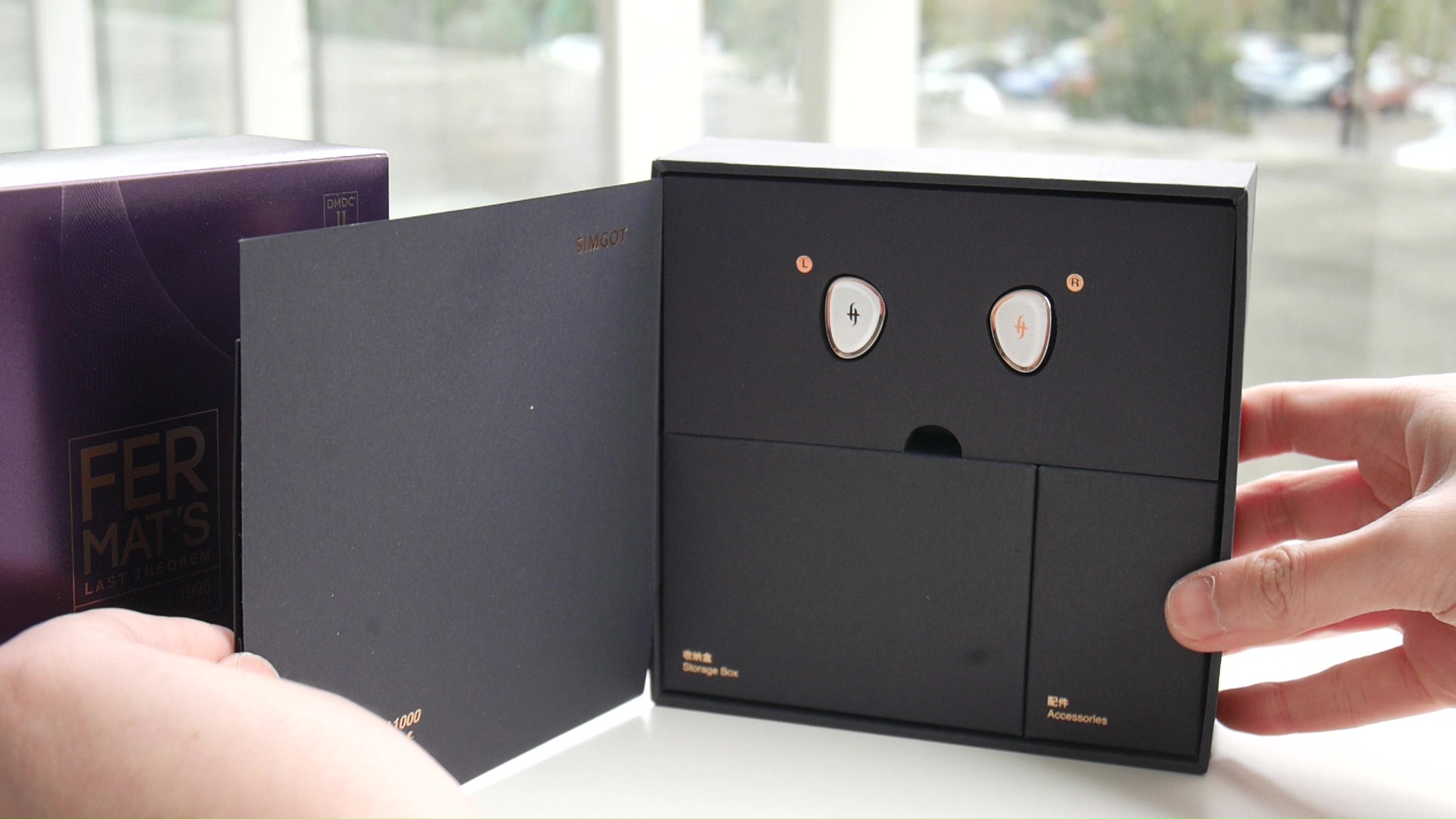
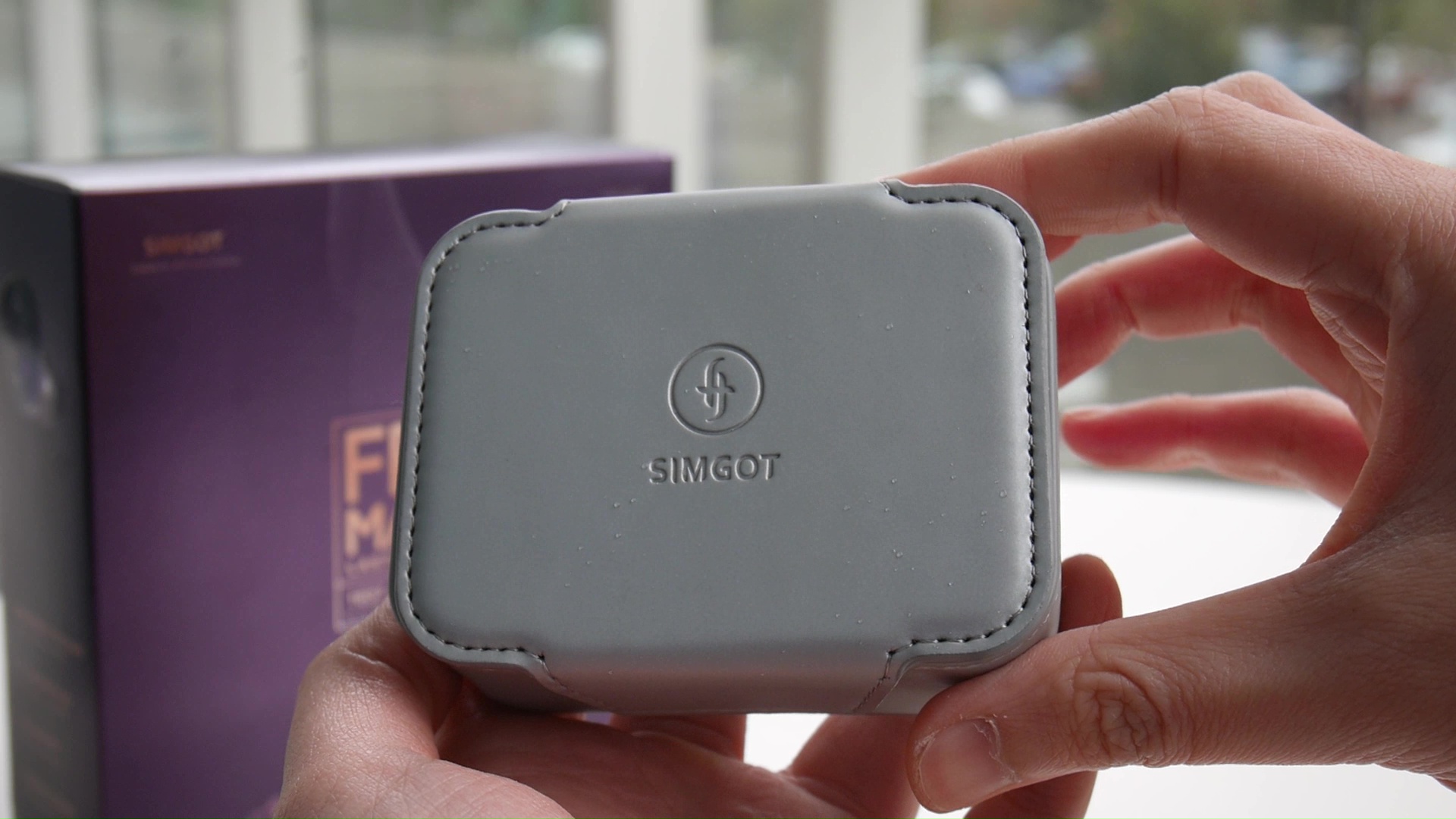
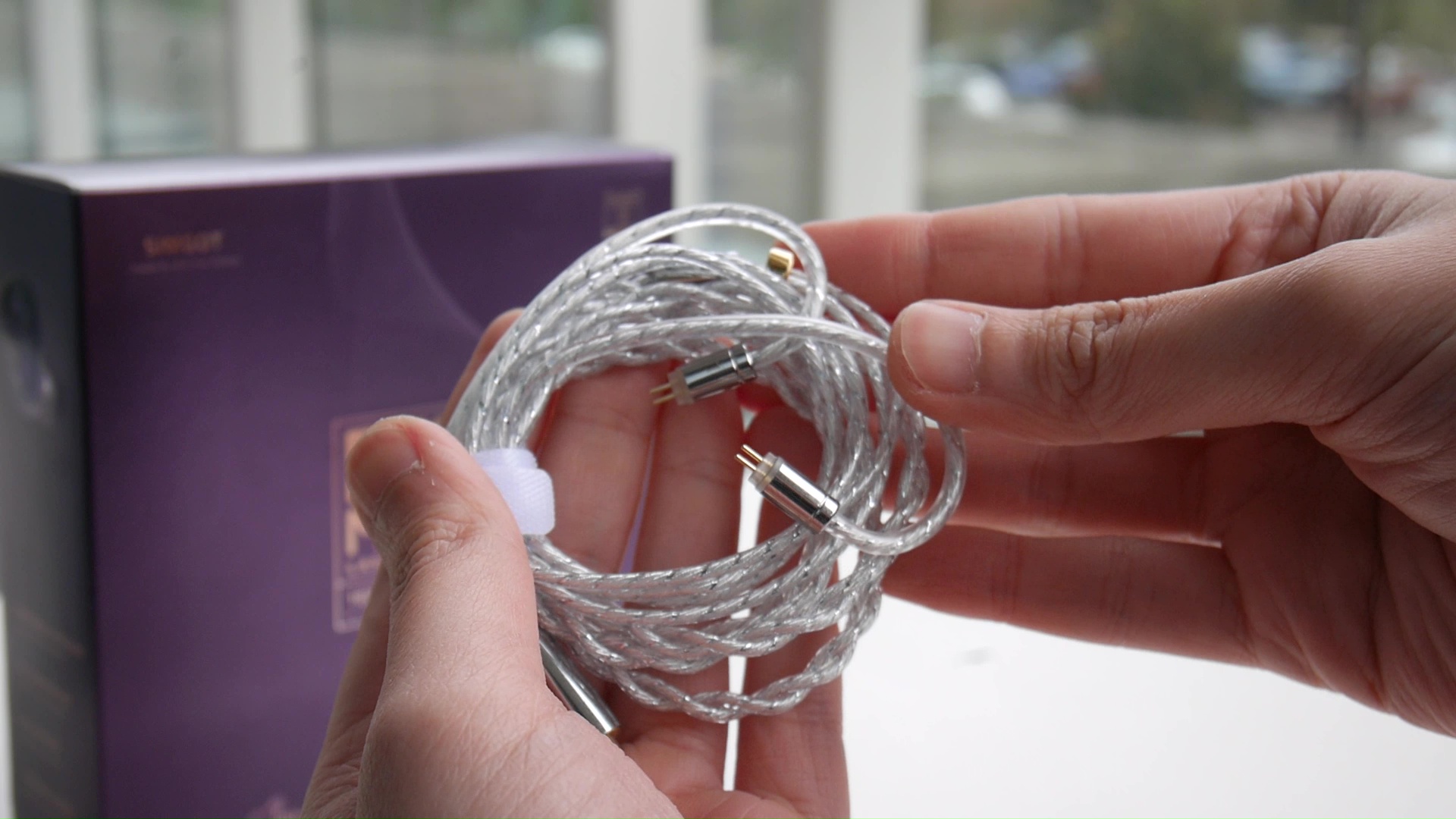

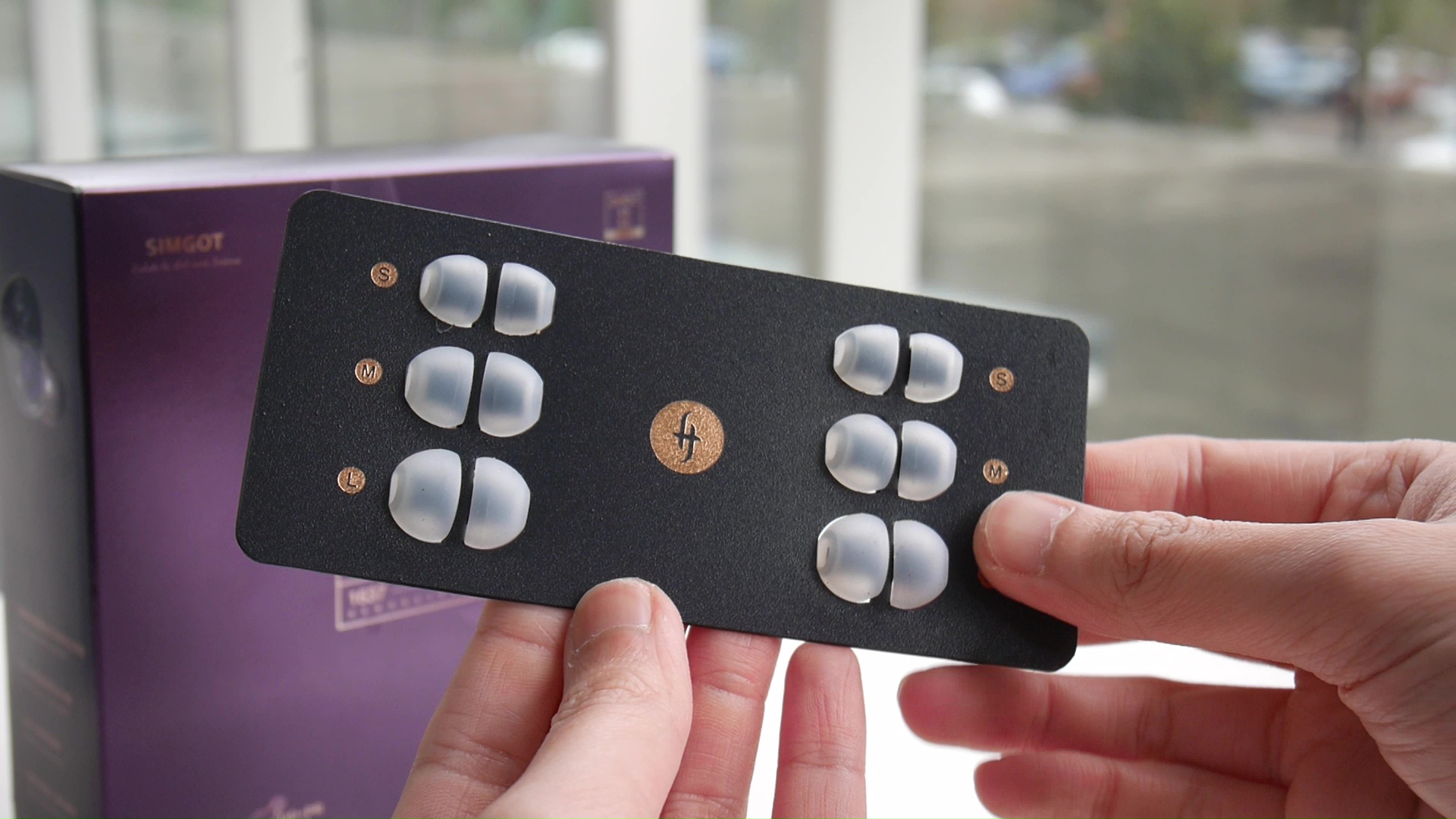
Packaging and accessories: The art design and packaging of EA1000 feel classy, elegant, and deliberate. Regarding accessories, Simgot provides EA1000 with most items that you might need: two types of silicone ear tips, an IEM cable, a carrying case, and two sets of interchangeable nozzles. The case is smaller than usual but still fits the IEM well and has enough space to carry the nozzle sets and some ear tips. The cable is a bit stiff but manageable. Unfortunately, only 3.5mm option is available.
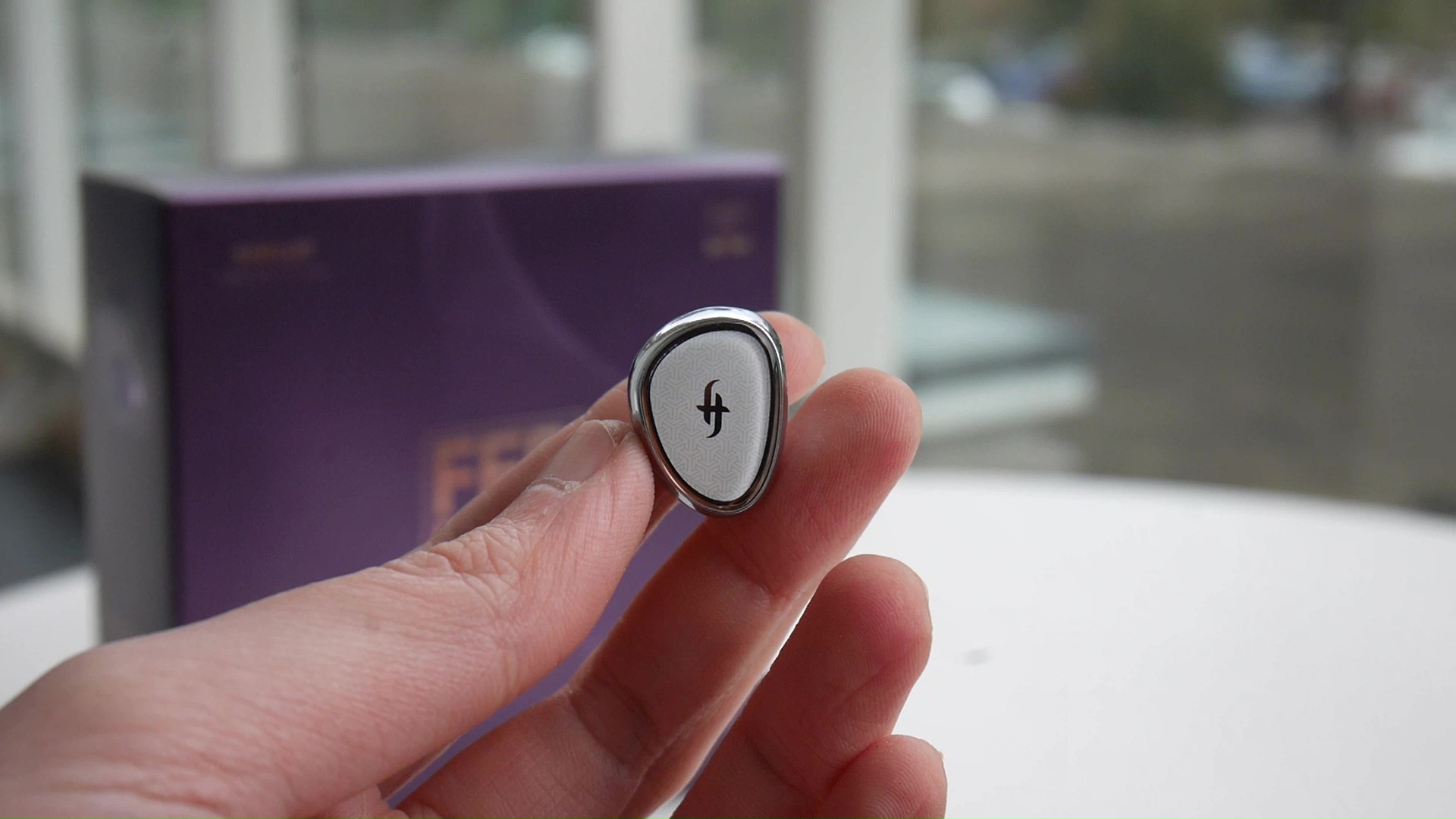
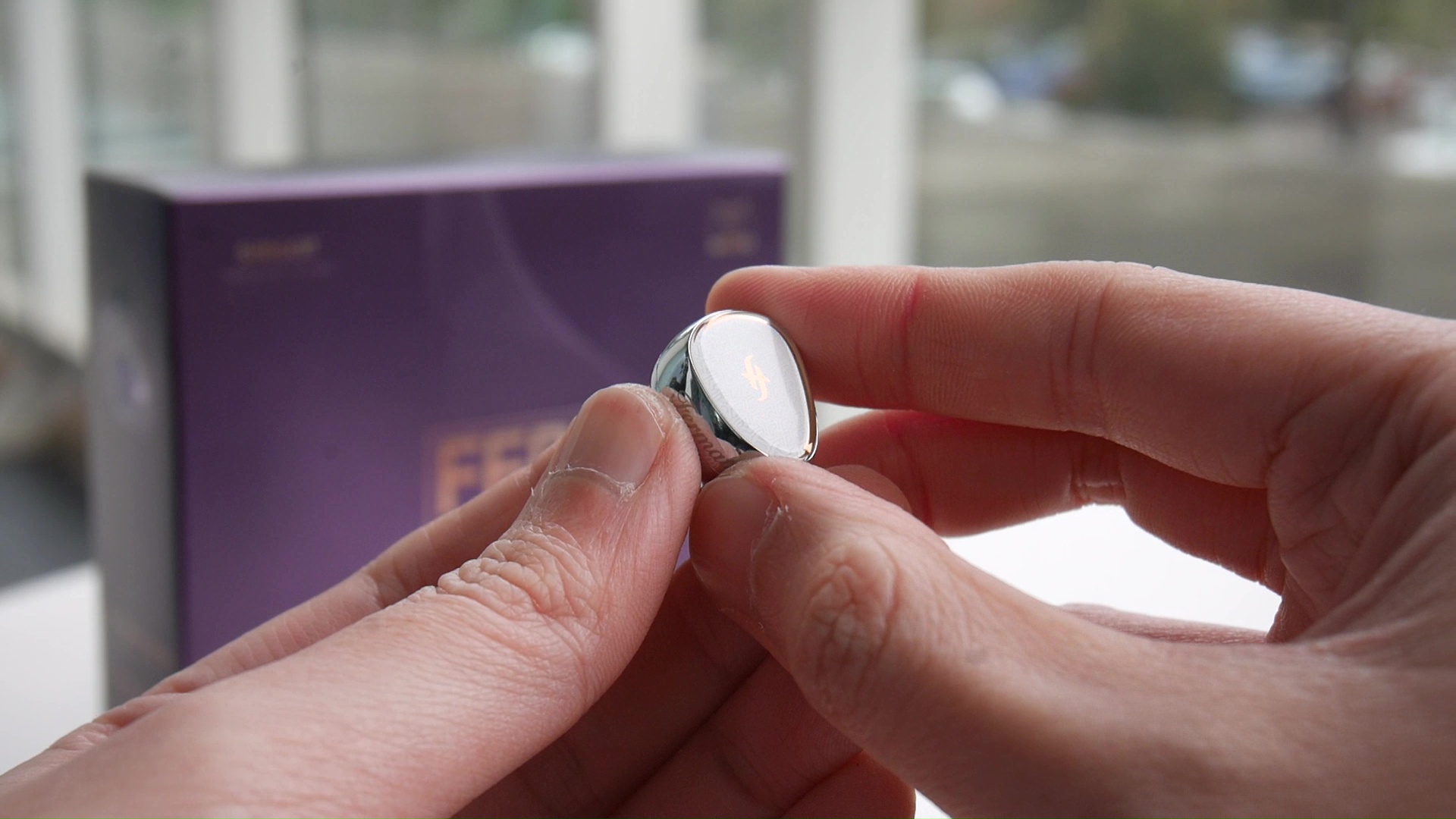
Earpieces design: The earpieces of EA1000 are constructed from stainless steel and polished to a mirror finished. Faceplates are glasses, which do raise some concern about their fragility. Still, the earpieces and faceplates remain relatively pristine, with only some hairline scratches after weeks of usage.



Regarding the size , the earpieces of EA1000 are smaller than average, especially if you compare them to the increasingly prevalent multi-driver IEMs. The nozzles are also on the smaller side. I found that I needed to do more “tip rolling” than expected to achieve a reliable and comfortable fit. After finding the right tips, I found EA1000 to be a comfortable IEM in long listening sessions. Noise isolation is not a strength of this IEM, likely due to the vents, passive radiators, and the cavity inside the earpieces.
Ear tips recommendation: I found that I can have two different sonic presentation with EA1000 just by changing ear tips. If I use a larger or longer tips (e.g., Spinfit CP145 or W1), I can push the earpieces away from the ear drums and thus increase the perceived width of the soundstage. However, the uncanny “out of the head” soundstage effect that EA1000 can do is diminished.
Alternatively, I can use shorter and smaller tips to wear the IEM deeper, pushing the passive radiator right against the concha of my ears. In this case, the soundstage feels narrower and the instruments concentrates more at the phantom center of the stage inside my hear. However, the uncanny “out of the head” effect of some background elements in the soundstage becomes stronger.
I personally use Azla Xelastec ear tips with EA1000, aiming for a balance between two of the described presentations.
Sonic Performance
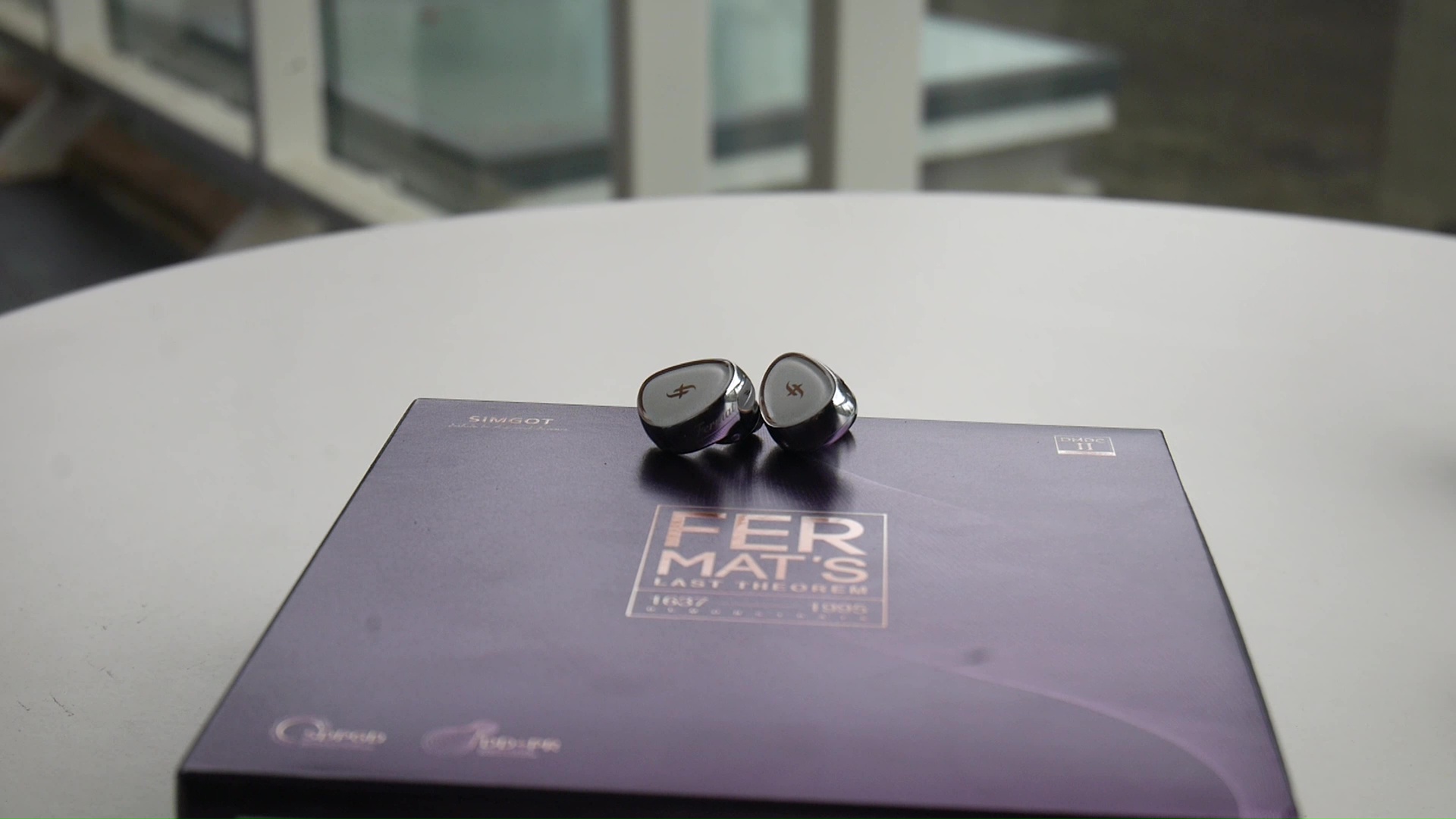
Testing setup:
- Sources: Luxury & Precision W4, iBasso DX300 (stock amp), HiBy R4, HiBy R3II
- Cable: NiceHck Moon God 3.5mm
- Ear tips: Azla Xelastec
Timbre, tonality, and tonal balance: Figure shows the frequency response of EA1000 against the Harman in-ear target. Measurements were done with an IEC-711-compliant coupler and might only be compared with other measurements from this same coupler. Above 8kHz, the measurement might not be correct. Visit my graph database for more comparisons.
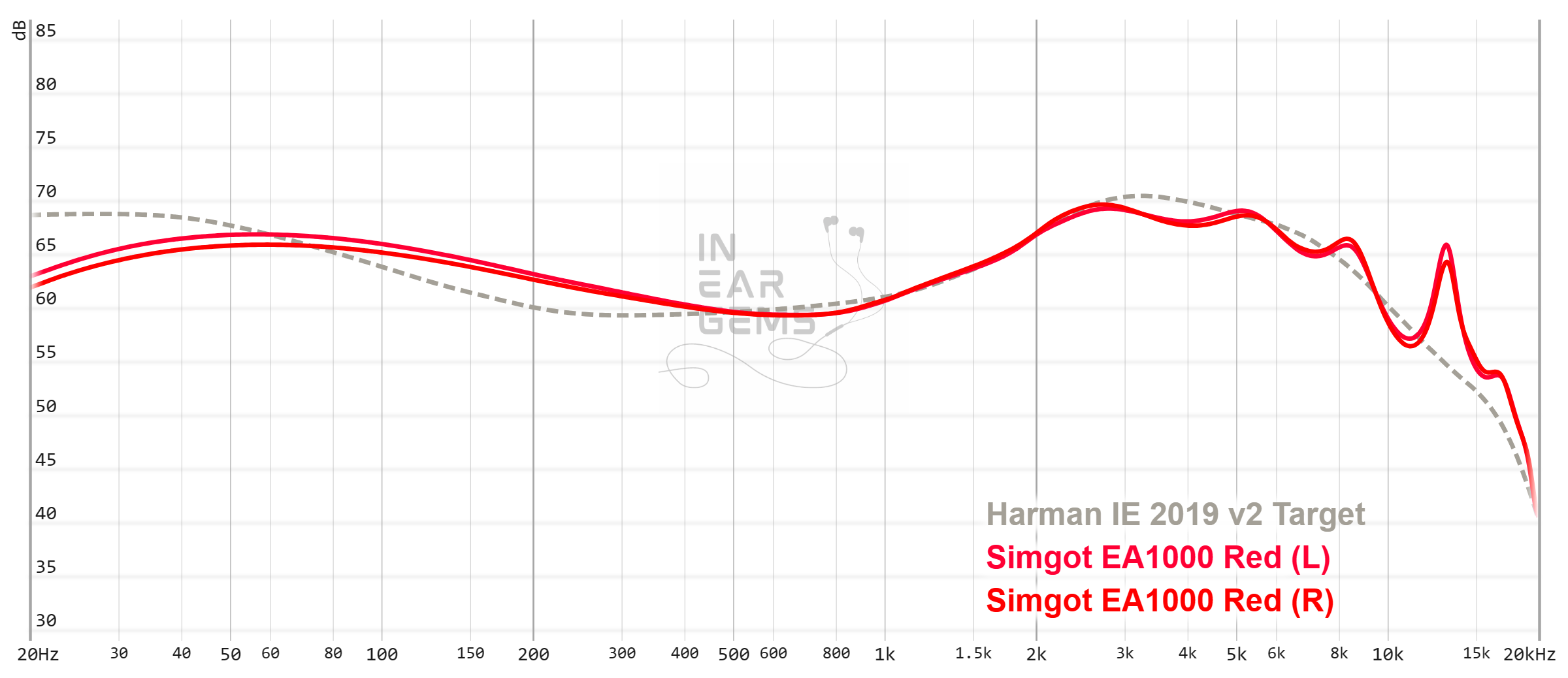
It is helpful to think of an IEM as a filter that highlights or subdues different parts of the incoming audio signal. This effect can be measured objectively by the squiggly lines above, called Frequency Response (FR) graphs, which measure how loud an IEM is at different frequencies from 20Hz (bass) to 20kHz (upper treble). Subjectivity is how your ears and brain interpret the effect of that filter on your music and decide whether it is “enjoyable.” There are some “rules of thumb” when it comes to tonality, but most interesting IEMs usually bend the rules masterfully.
If you have listened to any IEM from Simgot, the tonality of EA1000 would be quite familiar: clear, bright and “fresh” tonality paired with a decent amount of bass. You can choose between 3 sound signatures by swapping the nozzles of EA1000. The stock nozzles (stainless steel with red O-rings) is the least dampened as it does not have any foam or filter inside to absorb any frequencies (to my ears, zero dampening is ideal). Putting these nozzles on EA1000 nets you a tonality is that inspired by the Harman IE2019 target, with only two deviations: more lower-midrange and midbass (good!) and less subbass (meh). Thanks to the lower-midrange deviation to balance against the “true Harman” upper midrange, EA1000 has a natural reproduction of everything in my library, from vocals to piano to violin solo to large orchestral pieces.

At the same time, it does not dull down the clarity that you would expected from a “Harman-ish” IEM, which can be quite intense if you are used to warmer IEMs. For instance, Ed Sheeran’s “shivers” in the = album is too much for me. It was not sibilance (i.e., treble peak at 6kHz or 8kHz) that was problematic. No, EA1000 is not a sibilant IEM. It is the shrill and strident in his voice when hitting high notes that got me. It should be noted that this track is the “worst case scenario.” Case and point, the next track in the same album, “First Times”, sounds quite pleasant.
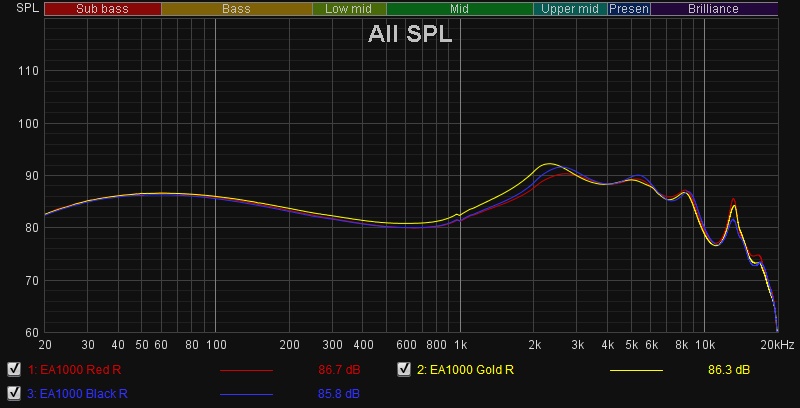
Switching to the golden nozzles which implements “Simgot-Golden 2023” target, I found the the tonality becomes much more imbalance toward the upper midrange. The tonal balance reminds me of an Etymotic IEM. After the novelty dissipated, I found that these nozzles are just not for me. Switching to last nozzles (stainless steel with black O-rings) which implements “Simgot Classic” target, I found a different, yet also bright sound signature. Implementation-wise, these nozzles seem to be the most dampened as they are filled with acoustic foams. Yet, I hear more sibilance across my library with these nozzles. Therefore, I would say whilst the tuning nozzles of EA1000 technically work, they are not practically useful because they let you increase rather than decrease the brightness of the tuning.
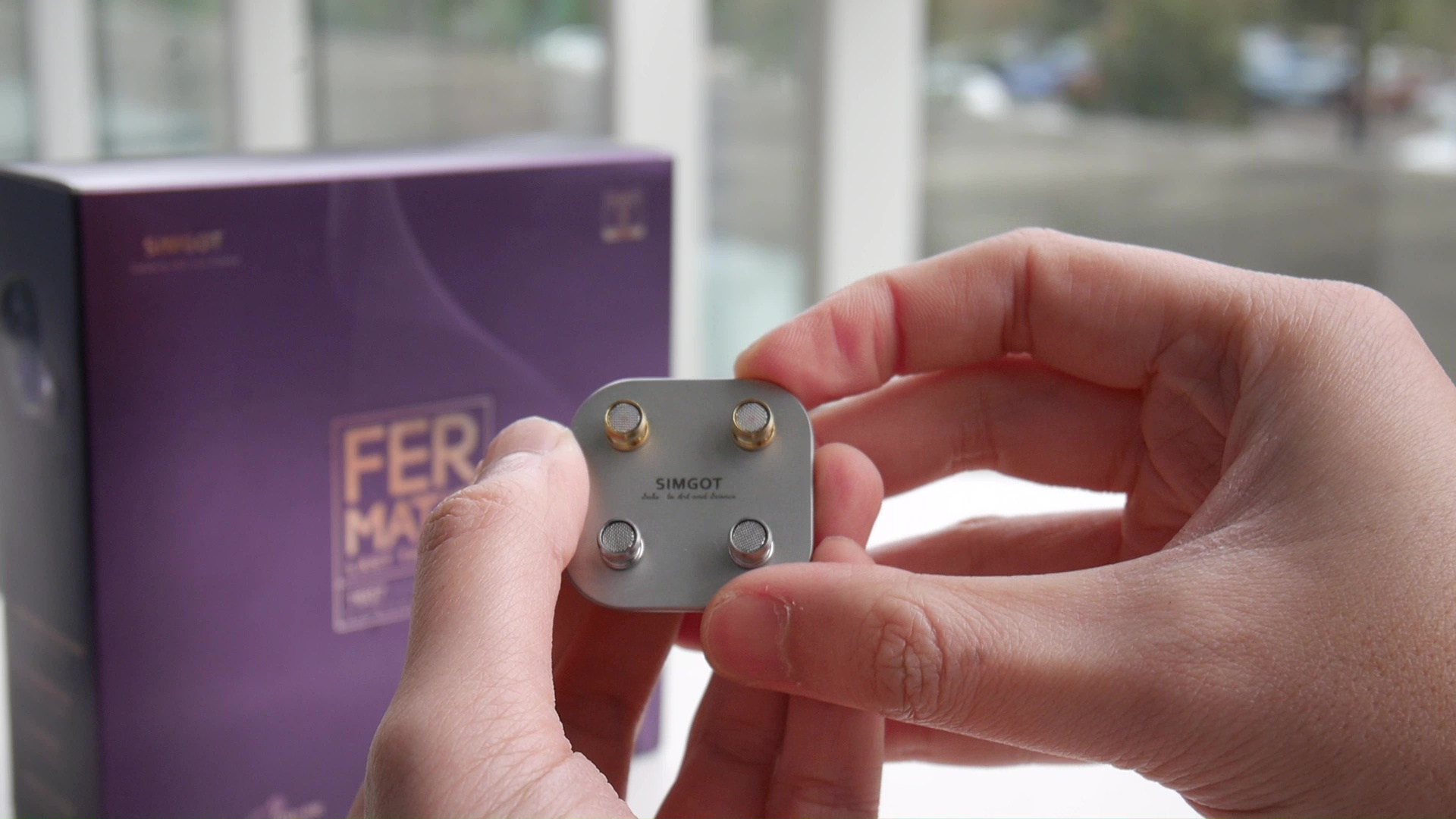
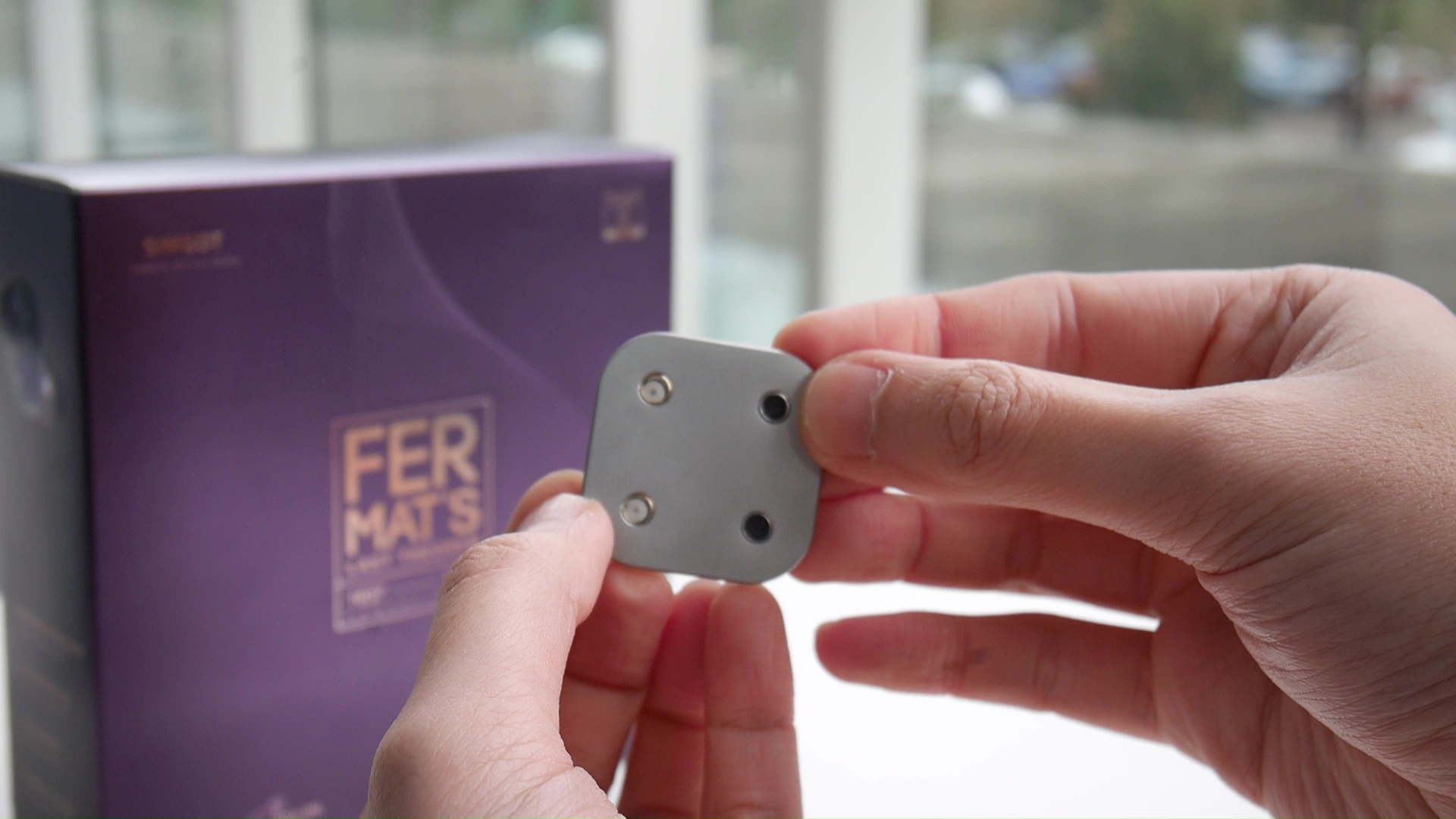
Still, besides the fringe cases such as Ed Sheeran’s Shivers, EA1000’s tonality and timbre is quite natural and enjoyable to listen, putting in the “great” (4/5) bracket in my book.

Bass and perceived dynamic:
The strength of the bass of EA1000 lies in the sense of texture. Simply put, bass guitars, cellos, and contrabasses sound very nice. For instance, when I listen to “Playing God” by Polyphia, my attention kept getting pulled toward the bass guitar. I also kept going to back to cello recordings in my library, such as the album Score by 2CELLOS, due to how EA1000 renders the sound of the lower strings of cellos. Instead of a smoothened low-pitch “ummmm” sound, these stringed instruments sounds like “Brrrmm.” Grippy.
The main weakness of EA1000 is that it does not sound as dynamic as I expected. It means the rapid jumps of loudness in the music, such as the first bass drop in “Playing God”, lack a bit of exaggeration and energy to make it “slam.” Perhaps this lack of dynamic is a function of the brighter tuning of EA1000. Whilst it is not a dealbreaker, in the sense that it does not make EA1000 sound boring, it’s something that I wish EA1000 can do better.
In general, I consider bass and dynamic of EA1000 as “great” (4/5) thanks to the texture of the bass.
Resolution: To me, “resolution” can be broken down into three components: (1) Sharpness, incisiveness, or “definition” of note attacks (see the figure above). (2) The separation of instruments and vocals, especially when they overlap on the soundstage. (3) The texture and details in the decay side of the notes. The first two give music clarity and make it easy to track individual elements of a mix. The last provides music details and nuances.

Thanks to the tuning, EA1000 is a clear sounding IEM. The DD itself is also quite good, maintaining a good level of note definition and instrument separation across the frequency response. For instance, the IEM can cope with busy soundtracks in the Ghost of Tsushima quite competently, maintaining enough separation and definition to avoid a mushy and congested sensation. Though, as expected, when I compare EA1000 in direct AB tests against some good multi-driver IEMs, EA1000 does fall behind.
Still, I find the resolution of EA1000 to be firmly in the “good” (3/5) level in my book, trading blows with the likes of Moondrop Blessing 2.
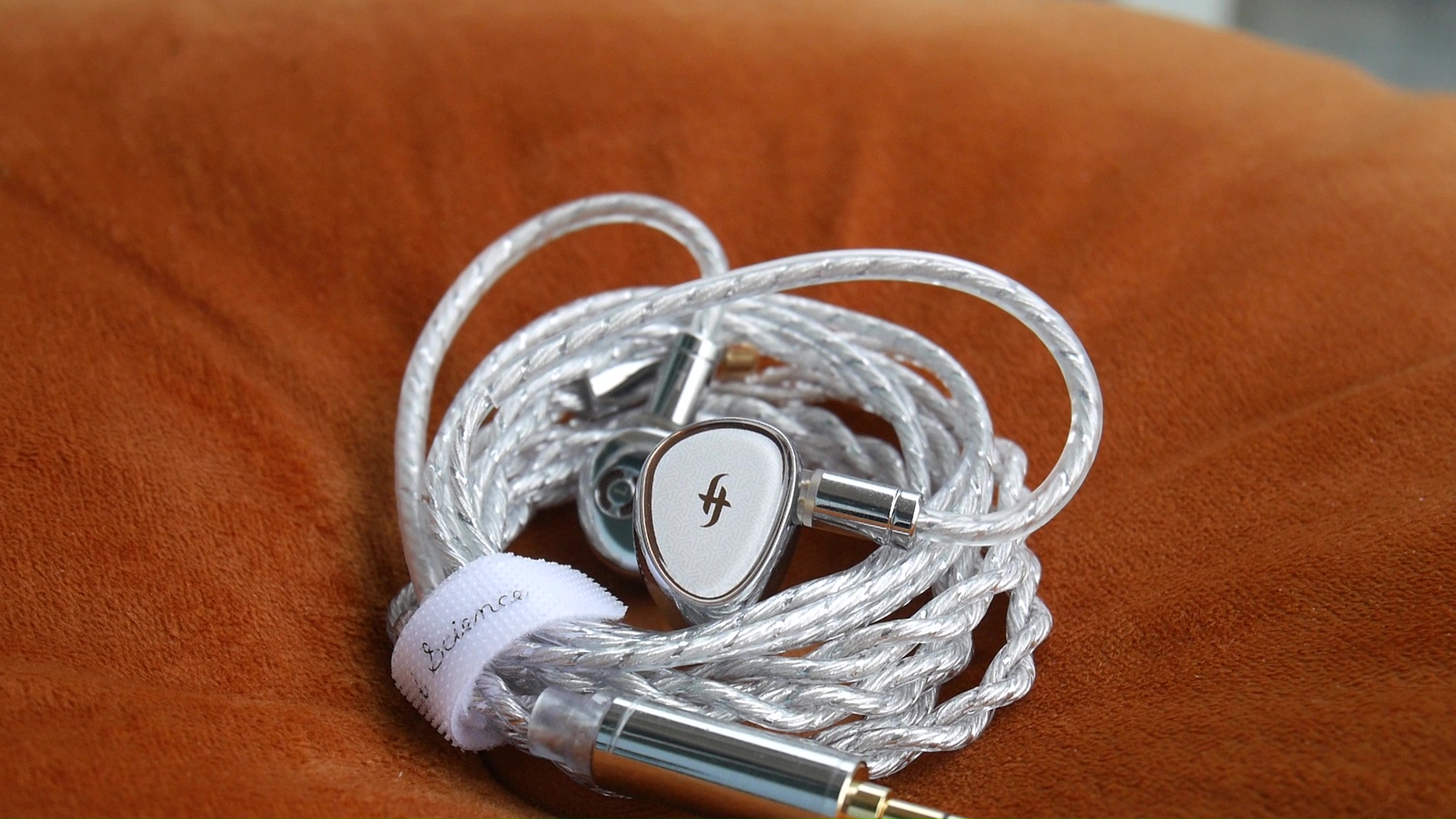
Stereo imaging and soundstage: Stereo imaging or “soundstage” is a psychoacoustic illusion that different recording elements appear at various locations inside and around your head. Your brain creates based on the cues in the recording, which are enhanced or diminushed by your IEMs, your DAC, and your amplifier. In rare cases, with some specific songs, some IEMs can trick you into thinking that the sound comes from the environment (a.k.a., “holographic”)

Soundstage and stereo imaging are perhaps the strongest aspect of EA1000 performance.
No, this IEM is not going to sound like your open back headphones or your stereo speakers. In fact, the overall shape of the stage is rather than unremarkable. Like most Harman-inspired IEM, the soundstage of EA1000 is quite concentrated in the phantom center inside the head, leading to the perception of a shallow but wide soundstage. On these aspects, the stage of EA1000 is just average.
However, the background elements of the stage is where it gets interesting. With spacious recordings, either orchestral or electronic, EA1000 can create an uncanny illusion that some background elements come from the outside of the “stage” within the head. This effect is clearer when instruments are panned to the sides of the stage. Yes, this effect is not something immediately highlighted and does not make the overall perception of the soundstage larger. But, for me, it gives an interesting new effect to the old tracks. I found myself going through my library to find more tracks where this effect is more audible. For a self-proclaimed soundstage addict, I see this as an absolute win. (4/5)
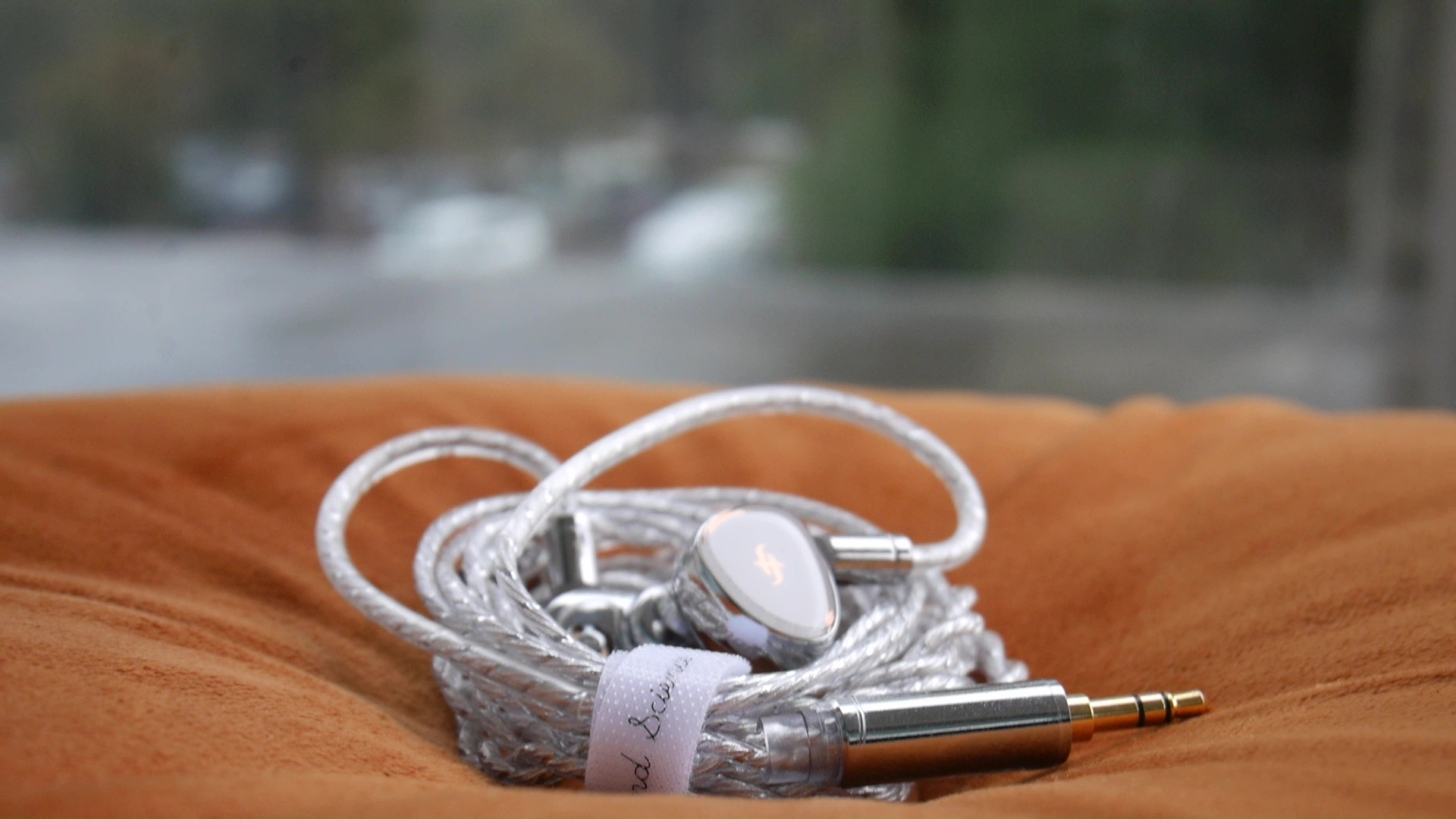
Multimedia usage:
EA1000 works quite well for FPS gaming. I hear a nearly spherical stage, making it easy to gauge the direction and distance of gunshot and footsteps, even though EA1000 does not offer laser sharp, pin point precision. Atmospheric games and movies work well with EA1000 as expected.
Pairing
EA1000 is an easy to drive IEM. It sounds good directly from the Apple USB-C to 3.5mm adapter (a.k.a., “Apple Dongle”) and only gets better from there. My only complain with the apple dongle pairing is that the low-end of EA1000 sounds a bit weaker and less defined. Moving to W4, the immediate change was the base: more prominent in the mix with stronger impact and sense of texture. Moving to DX300 presents another step up. The bass is even more prominent and the stage feels deeper, meaning the further sounds in the mix are pushed further away.
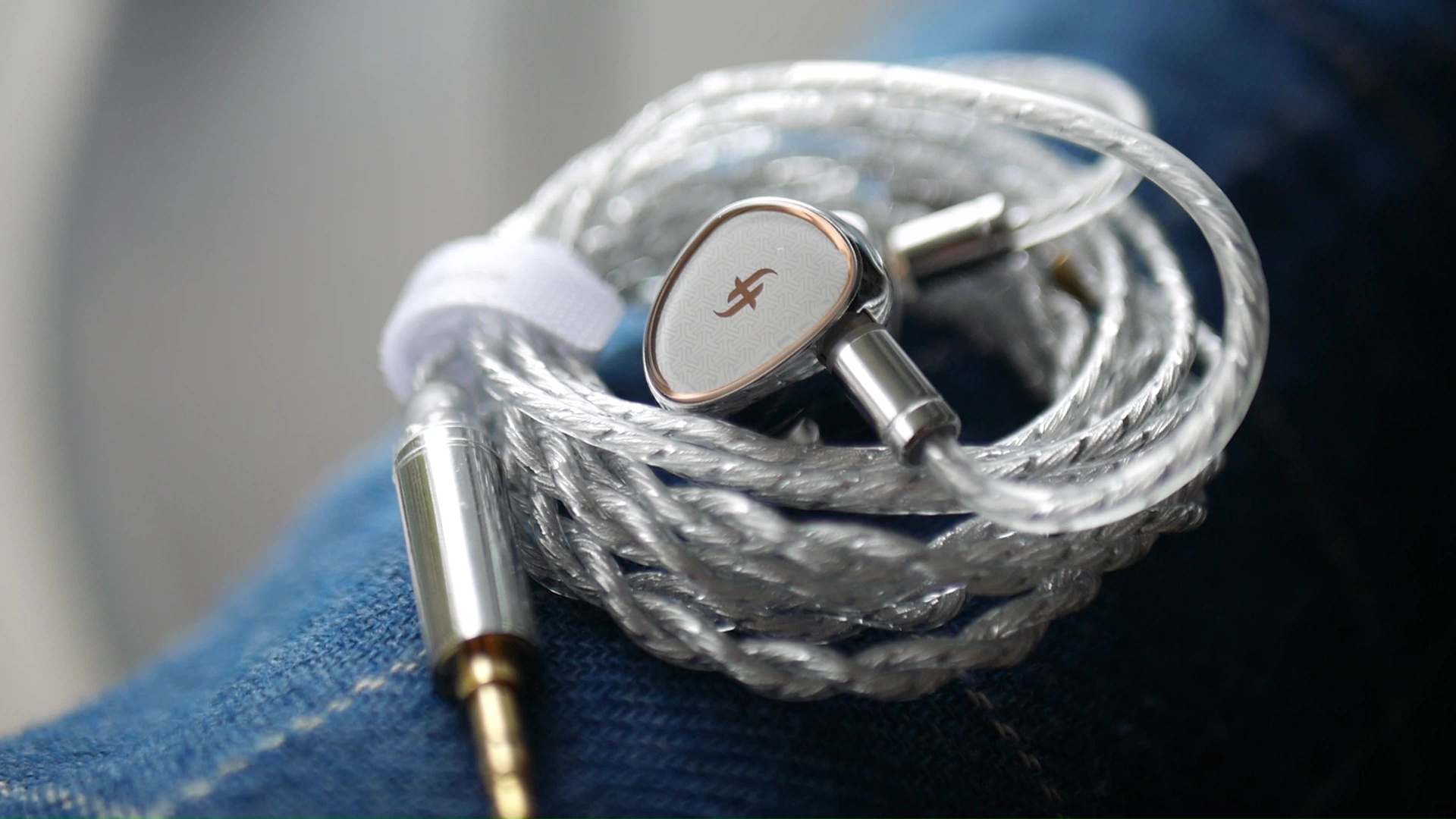
I also tested EA1000 with Simgot own dongle, the DEW4X. The result, for me, was mixed. On the plus side, the warmer-than-neutral tuning of DEW4X works nicely with EA1000, making its midrange more pleasant and the low-end more prominent. On the other hand, the stage is noticeably narrower and the nice “uncanny” effect that I describe was not apparent when I use the 3.5mm output of DEW4X. Switching to 4.4mm output brings the soundstage in line with other dongles, but the DEW4X is quite loud even at the first few volume levels. Yes, there are solutions, so this loudness is an annoyance rather than a dealbreaker. I can recommend DEW4X with EA1000, only if you also swap the stock cable for a 4.4mm one.
Comparisons
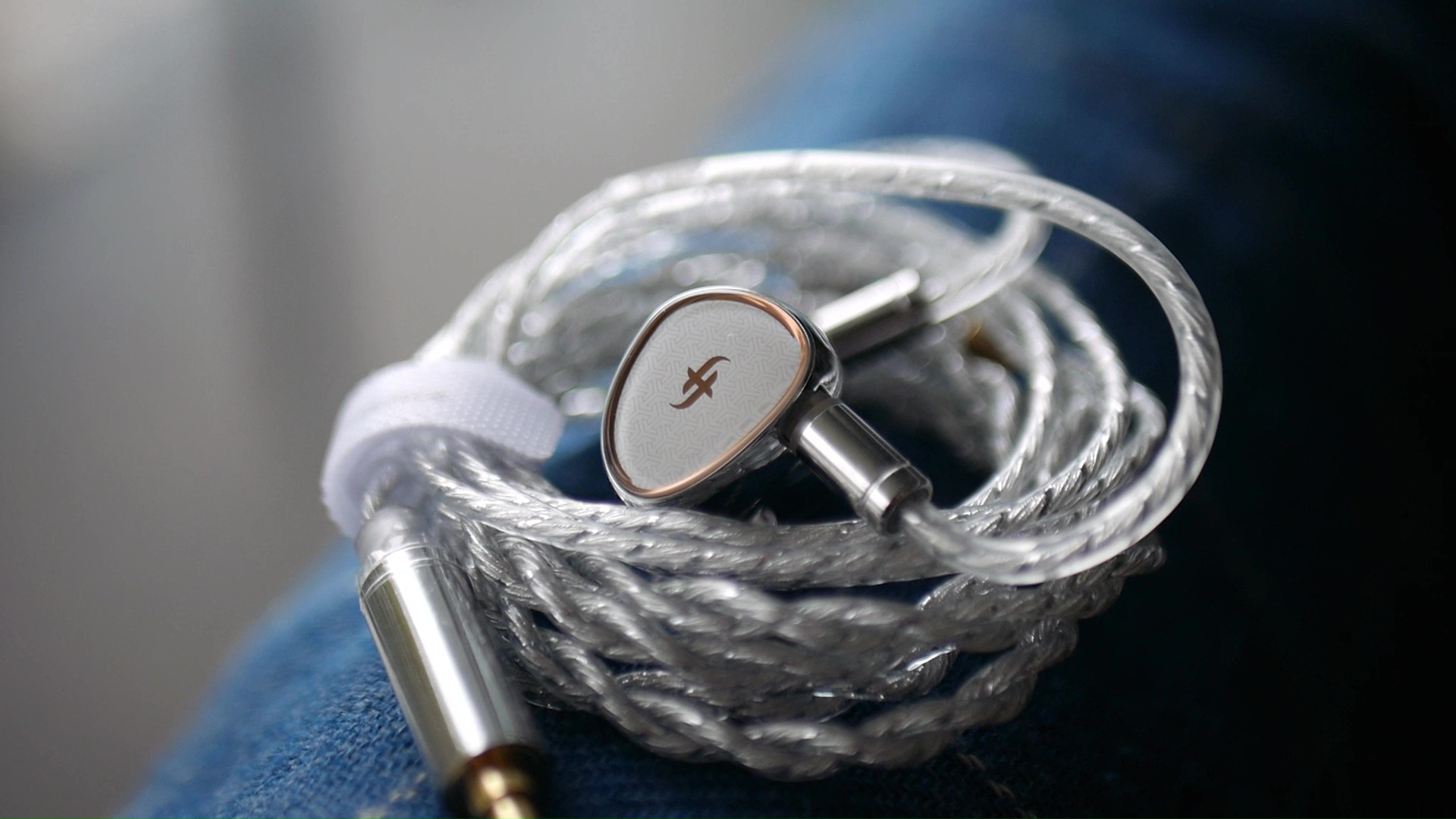
Source: L&P W4
Moondrop Blessing 2: This legendary IEM has been serving as my benchmark for a “good” IEM in terms of resolution since the early days. I put this comparison here just to capture my surprise of how much these two IEMs resemble each other in both tonal balance and resolution. From this perspective, the technical performance of the DD inside EA1000 is quite impressive.
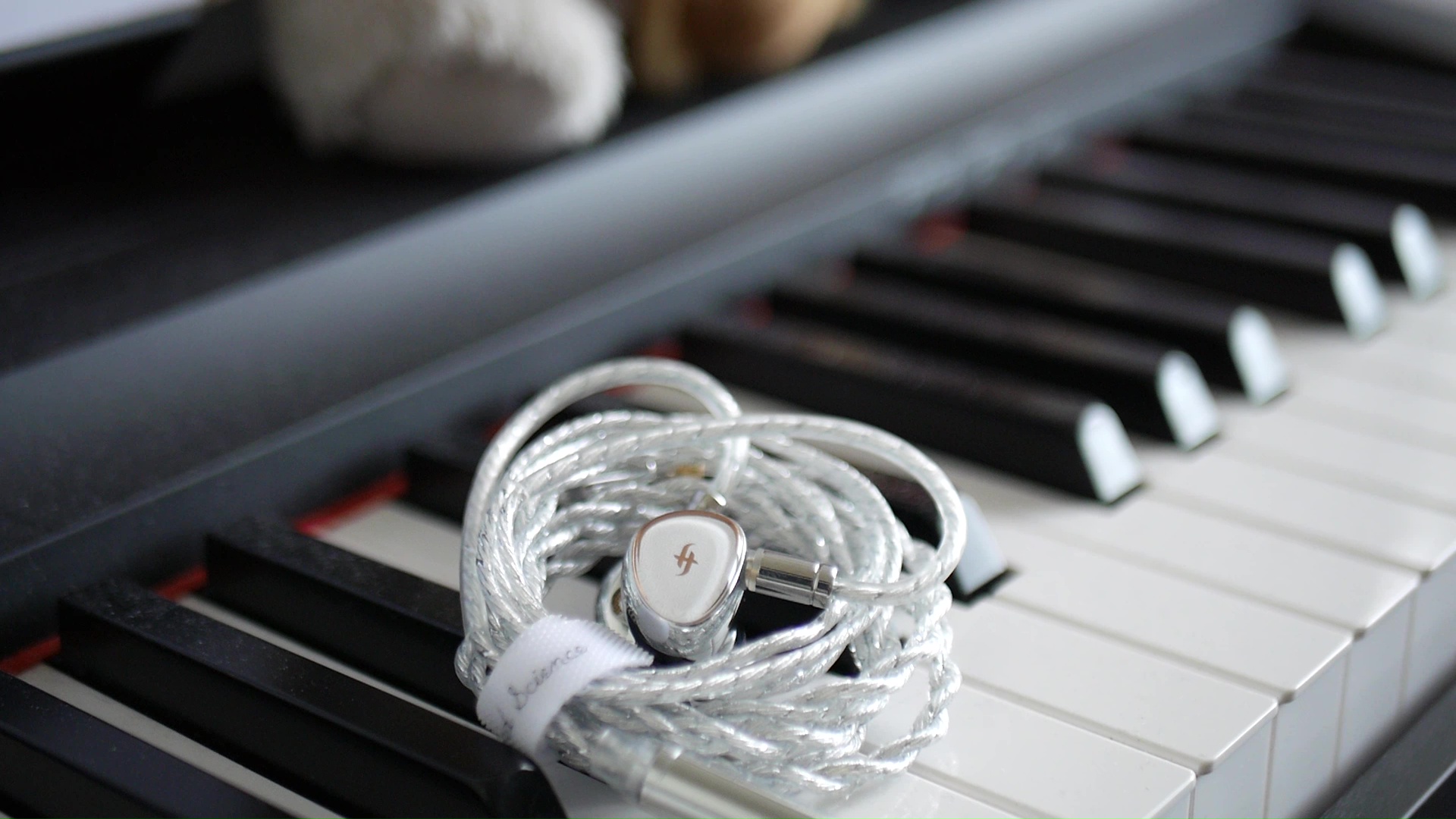
Dunu Falcon Ultra (Blue Nozzle, S&S ear tips): Perhaps no review of single DD IEM is complete without a comparison with the Falcon Ultra, one of the most accomplished single DD IEM in the late 2023 and early 2024 season. In this test, I use the default configuration of Falcon Ultra (blue nozzles) where it sounds the most detailed and clear. Listening to EA1000 and Falcon Ultra highlights the convergence towards homogeneity of the IEM market. Not only the tonal balance of these IEMs sound incredibly similar, they have nearly identical loudness at the same volume level. I would say the EA1000 is slightly ahead of the Falcon Ultra on all technical aspects: it’s slightly more resolving in busy recording, has slightly more dynamic bass and slightly better bass texture. The uncanny soundstage effect of EA1000 is a bonus, but I find the Falcon Ultra to have a larger soundstage.

HiBy x FAudio Project ACE (Comply foam tips): Finally, we have something that sounds different. In case you haven’t heard about this IEM, Project ACE is a $250 single DD IEM collaboratively developed by HiBy and FAudio, a Hong Kong audio boutique famous for DD-based IEMs. The first impression when I swap from EA1000 to Project ACE was shock due to the difference between tuning. The treble emphasis at around 6kHz and the subdued upper midrange of Project ACE stood in stark contrast against the suddued treble and boosted upper midrange of EA1000. I don’t think any approach is superior to the other, as my brain can EQ both sound signatures without much difficulty. After the “brain burn-in” / EQ kicked in, I found that the tuning of ACE makes the soundstage feels more spread out, not crowding the phantom centre like EA1000. However, EA1000 regains ground thanks to, again, the uncanny out-of-head illusion of the background elements of the music. The instrument separation, note definition, and micro details at the decay end of the note are all slightly better on Project ACE. Even though ACE does not have a distinct bass shelf, its tuning approach to take advantage of the equal loudness curve makes it sounds more dynamic. On ther other hand, EA1000 has a slight edge in terms of the bass texture.
Conclusions
I must admit I come into this review with very high expectation due to the reputation that preceeds EA1000. I’m glad go say that I was not disappointed. EA1000 is an accomplished DD-based IEM with a “special sauce”: the uncanny out-of-head imaging with many recordings, possibly thanks to the passive radiator. Beyond the sonic performance, EA1000 also scores high in terms of the accessories and overall packaging. In overall, it’s an impressive “mid-fi” IEM.
Should you get EA1000? As usual, it depends. You need to answer to yourself: how much do you like/dislike the tonal balance of Harman IE2019 target and the IEMs that are tuned closed to it? If that sound signature is your favourite or at least does make most of your music library sounds fatiguing and shrill, then EA1000 is a good option to consider. I also see this IEM as a perfect spot to pause on the gear upgrade “climbing.” Give it a good dongle, find the most suitable ear tips, change to a nice looking 4.4mm cable, and you perhaps you can stop thinking about upgrading gears for a while.
What I like about this IEM:
- Uncanny, out-of-head stereo imaging with the right tracks
- Bass texture
- Good instrument definition and separation
- Great design, build quality, packaging
What could be improved:
- Small shell and short nozzle can create fit challenges
- Harman-ish tonality can sound shrill and strident with some vocal
- Tuning nozzles work but are not useful
Absolute Sonic Quality Rating: 4/5 - Great
Bias Score: 4/5 - I like this IEM!

